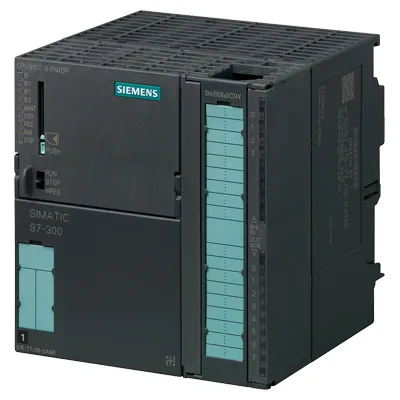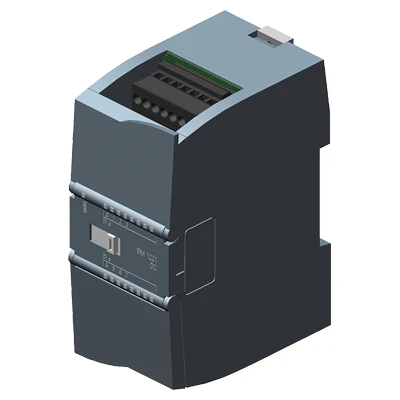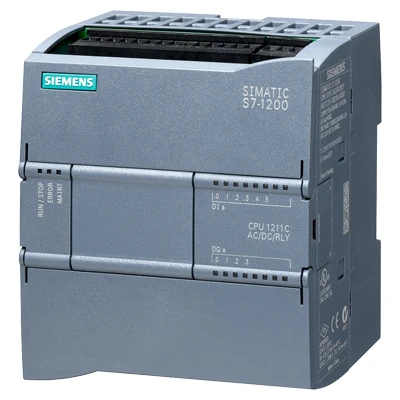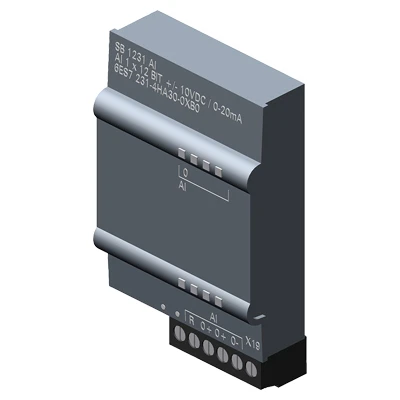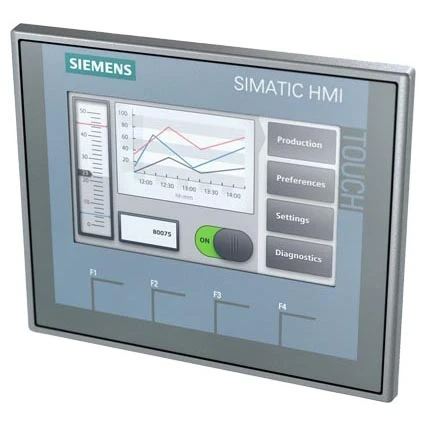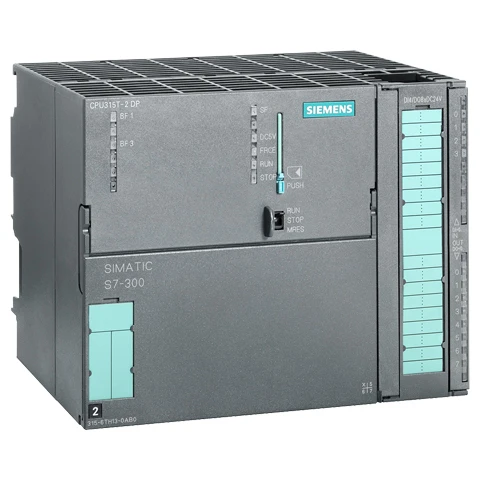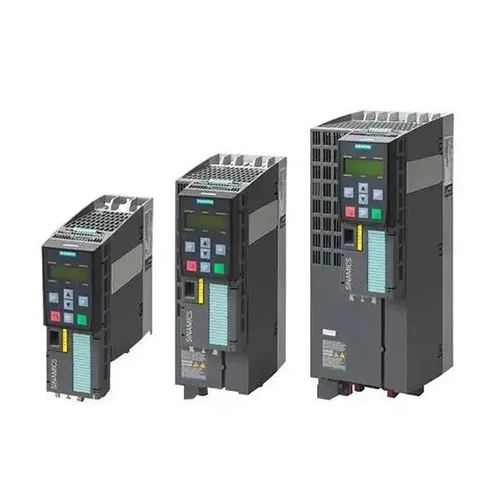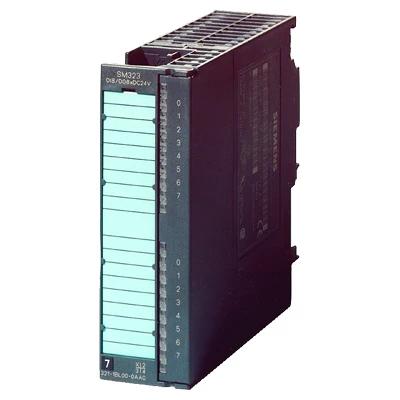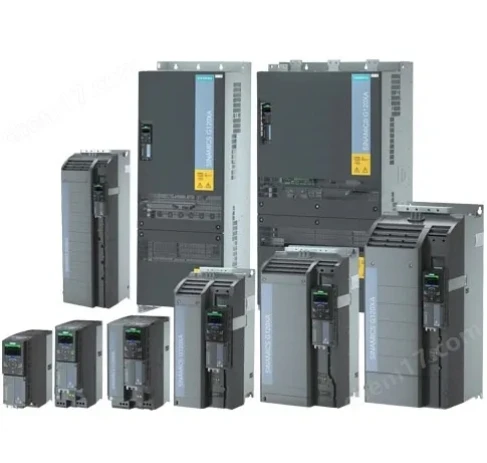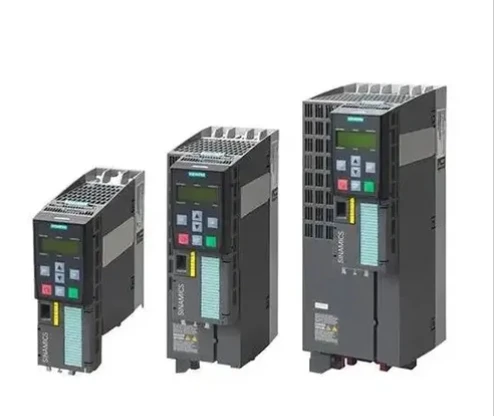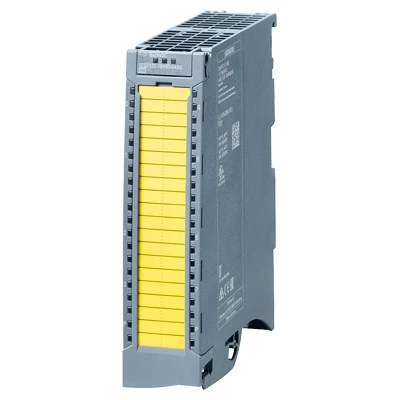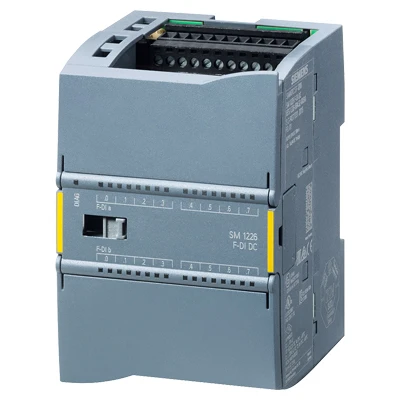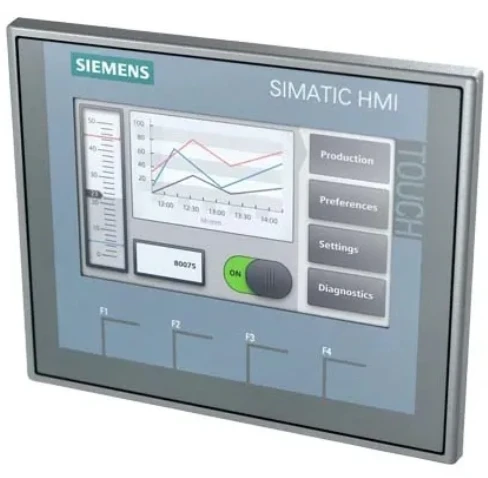VFD Manufacturers: High-Performance Variable Frequency Drives
In the realm of industrial automation, vfd manufacturers play a pivotal role in shaping the efficiency, precision, and sustainability of operations worldwide. Variable Frequency Drives (VFDs), also known as AC drives or inverters, are sophisticated power electronics devices that control the speed and torque of AC motors by varying the motor's input frequency and voltage. This comprehensive guide delves into the intricate world of VFD technology, from fundamental principles and cutting-edge industry trends to detailed manufacturing processes, application benefits, and strategic considerations for selecting the right supplier. Our aim is to provide an exhaustive resource that not only illuminates the technical prowess of VFDs but also empowers professionals to make informed decisions, ensuring optimal performance and substantial returns on investment.
Industry Trends and the Evolving Landscape for VFD Manufacturers
The landscape for vfd manufacturers is in a state of continuous evolution, driven by a confluence of technological advancements, environmental imperatives, and industrial demands. Key trends shaping this industry include:
- Digitalization and IoT Integration: Modern VFDs are increasingly equipped with advanced communication capabilities, enabling seamless integration into Industrial Internet of Things (IIoT) ecosystems. This allows for remote monitoring, predictive maintenance, and real-time data analytics, leading to enhanced operational insights and reduced downtime.
- Energy Efficiency Mandates: With escalating energy costs and stringent environmental regulations, the demand for highly efficient VFDs continues to surge. Variable frequency drives manufacturers are focusing on developing drives with superior power conversion efficiencies, lower harmonic distortion, and advanced energy optimization algorithms, such as flux vector control and direct torque control (DTC), which precisely manage motor magnetization and torque for maximum energy savings, especially under partial load conditions.
- Compact Design and Modular Solutions: Space constraints in industrial facilities necessitate smaller, more compact VFD designs. Furthermore, modular VFDs, allowing for flexible configurations and easier maintenance, are gaining traction. This modularity extends to components like power modules, control units, and communication interfaces, enabling quicker upgrades and replacements.
- Enhanced Safety and Reliability: Functional safety features, such as Safe Torque Off (STO) and Safe Stop (SS1), are becoming standard. These integrated safety functions simplify system design and ensure compliance with international safety standards (e.g., IEC 61800-5-2), significantly reducing the risk of accidents and protecting personnel and equipment.
- Customization and Application-Specific Drives: While general-purpose VFDs remain popular, there's a growing market for application-specific drives tailored for sectors like HVAC, pumping, and specialized machinery. These drives often come with pre-programmed functions and optimized control algorithms for specific tasks, simplifying commissioning and improving performance.
- Sustainable Materials and Manufacturing: A push towards environmentally friendly manufacturing processes and the use of recyclable materials is influencing production. Variable frequency drive supplier companies are exploring greener alternatives in component selection and waste reduction.
Technical Parameters of Variable Frequency Drives
Understanding the core technical parameters is crucial when selecting a VFD. These specifications dictate a drive's suitability for a given application:
- Input Voltage and Phases: Typically 200-240V (single/three-phase), 380-480V (three-phase), or 575-690V (three-phase), matching the power supply.
- Output Voltage and Frequency Range: Variable output voltage (often 0-rated input voltage) and frequency (e.g., 0-400 Hz, though often limited by motor design, typically up to 60-120 Hz for industrial applications).
- Rated Power (kW/HP): Aligned with the motor's power rating, with consideration for overload capacity (e.g., 150% for 60 seconds).
- Control Method:
- V/F Control (Scalar Control): Simple, open-loop, suitable for general-purpose applications like fans and pumps where precise speed control isn't paramount. Maintains a constant voltage-to-frequency ratio.
- Vector Control (Field-Oriented Control, FOC): Provides independent control of motor flux and torque, offering high dynamic performance, precise speed/torque control, and full torque at zero speed. Essential for demanding applications like cranes, extruders, and machine tools.
- Direct Torque Control (DTC): Advanced control method that directly controls motor flux and torque, providing very fast torque response without needing speed sensors in many cases. Offers excellent dynamic performance.
- Overload Capacity: Ability to sustain currents higher than rated for short durations (e.g., 150% for 60 seconds, 180% for 3 seconds).
- Protection Features: Overcurrent, overvoltage, undervoltage, overload, over-temperature, ground fault, short circuit protection.
- Harmonic Distortion (THD): Total Harmonic Distortion (current and voltage). Lower THD is desirable to prevent power quality issues. Many modern VFDs incorporate active front-end (AFE) technology or integrated harmonic filters to mitigate harmonics effectively, often achieving less than 5% THD(I) at full load.
- Enclosure Rating (IP Code): Defines protection against solids and liquids (e.g., IP20 for general indoor use, IP54 for dust and splash protection, IP65 for wash-down applications).
- Communication Protocols: Support for industrial networks like Modbus RTU, Profibus, EtherCAT, PROFINET, Ethernet/IP for seamless integration into control systems.
- Braking Options: Dynamic braking (using braking resistors to dissipate excess energy) or regenerative braking (feeding energy back to the grid).
Typical VFD Parameter Comparison Table
The following table illustrates typical parameters found across different VFD series, highlighting the variations among various variable frequency drives manufacturers catering to diverse industrial needs.
| Parameter | Standard VFD (V/F Control) | High-Performance VFD (Vector/DTC) | Compact VFD | Regenerative VFD |
|---|---|---|---|---|
| Input Voltage | 200-480V AC, 3-phase | 200-690V AC, 3-phase | 200-480V AC, 1/3-phase | 200-690V AC, 3-phase |
| Output Frequency Range | 0-120 Hz | 0-400 Hz (Motor Dependent) | 0-120 Hz | 0-400 Hz |
| Control Method | V/F (Scalar) | Sensorless Vector, Closed-Loop Vector, DTC | V/F, Sensorless Vector | Sensorless Vector, Closed-Loop Vector |
| Overload Capacity | 150% for 60s | 150-180% for 60s | 120-150% for 60s | 150% for 60s |
| Harmonic Mitigation | Standard (THD~40-50%) | Integrated Filters / AFE (THD | Standard | AFE (THD |
| Protection Rating (IP) | IP20 / IP21 | IP20 / IP54 | IP20 | IP20 / IP54 |
| Communication Protocols | Modbus RTU | Ethernet/IP, PROFINET, Modbus TCP, Profibus | Modbus RTU | Ethernet/IP, PROFINET, Modbus TCP |
| Braking | Dynamic Braking (Resistor) | Dynamic Braking, Regenerative Ready | Dynamic Braking (Optional) | Full Regenerative |
| Typical Efficiency | >97% | >98% | >96% | >98% |
Diverse Application Scenarios of VFDs
VFDs are ubiquitous across various industrial sectors due to their unparalleled ability to optimize motor performance and energy consumption. Some prominent application scenarios include:
- HVAC Systems (Heating, Ventilation, Air Conditioning): VFDs are indispensable for controlling fans, pumps, and compressors, enabling precise airflow and pressure regulation. This leads to significant energy savings (often 30-50%) and improved indoor air quality by matching motor speed to demand.
- Pumps and Fans: In water treatment plants, municipal water supply, irrigation systems, and industrial cooling towers, VFDs precisely control pump and fan speeds. This minimizes wear and tear, reduces water hammer effects, and critically, saves energy because power consumption for centrifugal loads is proportional to the cube of the speed.
- Conveyor Systems: From logistics and warehousing to mining and manufacturing, VFDs provide smooth starting and stopping for conveyors, eliminating mechanical shock and allowing precise speed synchronization for optimal material flow.
- Compressors: In industrial air compression and refrigeration, VFDs adjust compressor speed to match demand, avoiding inefficient on/off cycling and delivering substantial energy savings, particularly in applications with varying load requirements.
- Oil & Gas Industry: VFDs are critical for controlling pumps (e.g., pipeline pumps, submersible pumps), compressors, and drilling rigs, especially in harsh environments. Their robust design, often with specialized enclosures (e.g., NEMA 4X for corrosion resistance), ensures reliable operation in explosive atmospheres and extreme temperatures.
- Metallurgy and Mining: Used for mills, crushers, hoists, and conveyors, VFDs provide high torque at low speeds, precise speed control, and robust operation under heavy loads and dusty conditions. Their ability to handle high inertia loads smoothly is paramount.
- Chemical and Petrochemical Plants: In processes involving mixing, stirring, and pumping corrosive or hazardous materials, VFDs offer precise control, reduce mechanical stress on equipment, and are often specified with explosion-proof ratings (e.g., ATEX, UL) and specialized corrosion-resistant coatings to withstand aggressive chemical environments.
- Food and Beverage: For mixers, pumps, conveyors, and packaging machinery, VFDs ensure hygienic operation, precise speed control for batch processing, and ease of cleaning, often requiring wash-down rated enclosures (IP66/IP69K).
- Paper and Pulp Industry: VFDs synchronize the speeds of multiple sections of paper machines, ensuring consistent web tension and high-quality product, as well as controlling refiners and pumps.
- Textile Industry: Precise speed control for spinning, weaving, and dyeing machines is achieved with VFDs, ensuring consistent product quality and reducing material waste.
Technical Advantages of Implementing VFDs
The widespread adoption of VFDs is attributable to a multitude of significant technical and operational advantages:
- Unparalleled Energy Savings: This is arguably the most compelling benefit. By precisely matching motor speed to the actual load requirement, VFDs eliminate the energy waste associated with traditional mechanical flow control methods (dampers, valves) or fixed-speed operation. For centrifugal loads (pumps, fans), even a small reduction in speed can lead to substantial energy savings due to the cube law relationship between speed and power.
- Precise Process Control: VFDs offer highly accurate and repeatable speed, torque, and position control. This is vital for processes requiring fine-tuning, such as metering pumps, winding machines, and synchronized production lines, leading to improved product quality and consistency.
- Reduced Mechanical Stress and Extended Equipment Lifespan: Soft starting and stopping capabilities eliminate the destructive inrush currents and mechanical shock associated with direct-on-line (DOL) starting. This significantly reduces wear and tear on motors, gearboxes, bearings, belts, and other mechanical components, extending the operational lifespan of the entire system and reducing maintenance costs.
- Improved Power Factor: Modern VFDs, especially those with active front ends (AFE), can improve the overall power factor of the electrical system, reducing reactive power consumption and potentially avoiding utility penalties.
- Enhanced Diagnostics and Protection: VFDs incorporate sophisticated diagnostic features that monitor motor and drive parameters (current, voltage, temperature, fault codes). This allows for early detection of potential issues, facilitating predictive maintenance and preventing catastrophic failures. They also provide comprehensive motor protection against overcurrent, overvoltage, undervoltage, and overheating.
- Reduced Noise and Vibration: By controlling motor speed, VFDs can often operate equipment at optimal points, reducing noise levels and mechanical vibrations, contributing to a more comfortable and safer working environment.
- Simplified System Design: In many cases, VFDs can eliminate the need for mechanical speed reducers, gearboxes, and other mechanical components, simplifying system design, reducing space requirements, and lowering installation costs.
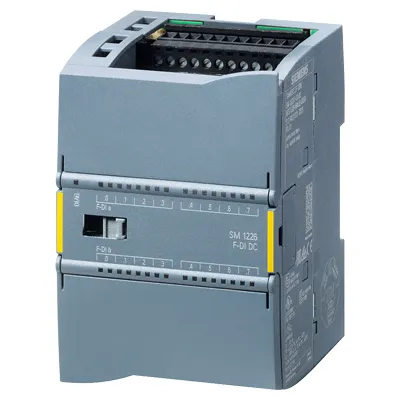
The Meticulous Manufacturing Process of Variable Frequency Drives
The production of high-quality VFDs is a complex, multi-stage process that combines precision engineering, advanced materials science, and rigorous quality control. Reputable variable frequency drives manufacturers adhere to stringent standards to ensure reliability and performance. Below is a detailed breakdown of a typical VFD manufacturing process:
Phase 1: Component Sourcing and Quality Inspection
The journey begins with the meticulous selection and sourcing of raw materials and electronic components. This includes semiconductors (IGBTs, MOSFETs), capacitors (electrolytic, film), inductors, transformers, PCBs (Printed Circuit Boards), microcontrollers, cooling fans, heatsinks, and various sensors. Only suppliers adhering to strict quality standards (e.g., ISO 9001 certified) are chosen. Upon arrival, components undergo a rigorous Incoming Quality Control (IQC) process, involving visual inspection, dimensional checks, electrical parameter verification (e.g., capacitance, resistance, inductance), and often, accelerated life testing for critical components like capacitors and IGBTs. Material composition is sometimes verified using X-ray fluorescence (XRF) or other analytical techniques to ensure compliance with RoHS and REACH directives, confirming the absence of hazardous substances. The chassis materials, typically steel or aluminum alloys, are selected for their strength, thermal conductivity, and corrosion resistance, often undergoing surface treatments like powder coating or anodization.
Phase 2: PCB Assembly and Soldering
The brain of the VFD – the control board and power board PCBs – are assembled. This typically involves:
- Solder Paste Printing: A stencil is used to apply solder paste precisely onto the component pads of the PCB.
- Component Placement (Pick-and-Place): High-speed automated pick-and-place machines accurately position thousands of tiny surface-mount devices (SMDs) onto the solder paste. For larger components or through-hole components (like electrolytic capacitors or connectors), manual insertion or selective soldering might be employed.
- Reflow Soldering: The PCBs pass through a reflow oven, where controlled heating melts the solder paste, creating robust electrical and mechanical connections between components and the board.
- Automated Optical Inspection (AOI): After reflow, AOI systems use cameras to inspect every solder joint and component for defects such as shorts, open circuits, incorrect polarity, or missing components.
- In-Circuit Testing (ICT): Electrical tests are performed on the bare or partially assembled PCB to check for proper connectivity and functionality of individual components and circuits.
- Functional Testing (FCT): The completed PCB assemblies are powered up and subjected to functional tests to ensure they meet design specifications and perform their intended logical operations.
Phase 3: Power Module Integration and Heatsink Assembly
The power stage, comprising IGBTs (Insulated Gate Bipolar Transistors) or MOSFETs, is crucial for power conversion. These high-power components generate significant heat and are therefore mounted onto robust heatsinks. The heatsinks themselves are typically aluminum extrusions or cast aluminum, designed for optimal thermal dissipation. Thermal interface materials (TIMs), such as thermal paste or pads, are applied between the power modules and heatsinks to ensure efficient heat transfer. The assembly often involves precision CNC machining for the heatsink mounting points to ensure flatness and maximum contact. The manufacturing process here might involve metal stamping for mounting brackets and advanced welding or brazing for securing the heatsink to the chassis, ensuring long-term structural integrity and thermal performance.
Phase 4: Mechanical Assembly and Wiring
This phase brings together all the sub-assemblies. The assembled PCBs, power modules with heatsinks, cooling fans, input/output terminals, display panels, and protective enclosures are systematically mounted into the VFD chassis. Internal wiring connects the power and control circuits, adhering to strict electrical codes and safety standards. Cable management is crucial to prevent electromagnetic interference (EMI) and ensure maintainability. This stage often involves skilled technicians for precise wiring and torque-controlled fastening of components. The enclosure, typically made from high-grade steel or engineering plastics, may undergo processes like sheet metal fabrication (cutting, bending, welding), powder coating for corrosion resistance, or plastic injection molding for specific designs, ensuring the VFD meets its specified IP (Ingress Protection) rating.
Phase 5: Firmware Loading and Configuration
The VFD's embedded software (firmware), which controls its operation, algorithms, and communication protocols, is loaded onto the microcontroller. This process is typically automated. Initial configuration parameters are set to prepare the drive for testing.
Phase 6: Comprehensive Testing and Quality Assurance
This is arguably the most critical phase, ensuring the VFD's reliability and performance. A series of rigorous tests are performed:
- Electrical Safety Tests: Dielectric strength (Hi-Pot) tests, ground bond tests, and insulation resistance tests ensure electrical safety and compliance with standards like IEC 61800-5-1.
- Functional Tests: The VFD is connected to a motor (or a motor simulator/dynamometer) and subjected to various load conditions. Tests include speed control accuracy, torque response, overload capability, dynamic braking performance, and verification of all input/output signals and communication protocols. This validates the VFD's ability to drive a motor effectively under diverse operational scenarios.
- Burn-in Test: VFDs are often operated under load for an extended period (e.g., 24-72 hours) at elevated temperatures. This accelerates potential infant mortality failures of components, ensuring that only robust units proceed to final inspection.
- Electromagnetic Compatibility (EMC) Testing: Ensures the VFD operates without causing or being susceptible to excessive electromagnetic interference, complying with standards like IEC 61800-3.
- Environmental Testing: Depending on the target application, VFDs may undergo thermal cycling, humidity testing, vibration testing, and shock testing to simulate real-world environmental conditions.
- Final Quality Inspection: A comprehensive visual inspection checks for any physical damage, correct labeling, and adherence to assembly standards. Documentation and accessories are verified.
All test results are meticulously recorded, and traceability systems ensure that each VFD unit can be traced back to its components and manufacturing batch. Compliance with international standards such as ISO 9001 (Quality Management Systems), IEC (International Electrotechnical Commission) standards for drives, UL (Underwriters Laboratories) for safety, and CE marking for European conformity is paramount. The average usage lifespan of a well-maintained VFD, built with these stringent processes, is typically 10-15 years, with some units exceeding 20 years in less demanding applications.
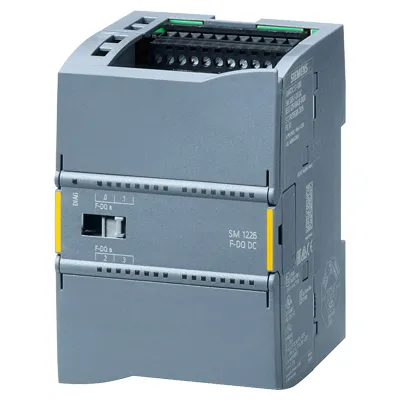
Choosing the Right Variable Frequency Drives Manufacturer: A Comparative Approach
Selecting the optimal variable frequency drives manufacturer is a strategic decision that impacts long-term operational efficiency, reliability, and cost of ownership. Beyond initial purchase price, several critical factors should be considered:
- Technical Expertise and Innovation: A leading variable frequency drives manufacturer invests heavily in R&D, continually introducing innovative features like advanced control algorithms (e.g., adaptive motor control, active flux control), enhanced communication capabilities, and superior harmonic mitigation techniques. Look for manufacturers with a history of patenting new technologies and contributing to industry standards.
- Product Range and Customization: Does the manufacturer offer a broad portfolio covering low to medium to high voltage applications, various power ratings, and diverse control methods? Can they provide customized solutions for unique application requirements (e.g., specialized enclosures, tailored firmware, or integrated safety functions)?
- Quality and Reliability: Investigate the manufacturer's quality control processes, certifications (e.g., ISO 9001, ISO 14001, ISO 45001), and product testing methodologies. A robust VFD should have a low failure rate and a long design life. Review customer testimonials and independent reliability studies.
- Global Service and Support Network: A strong manufacturer will have a widespread network of authorized distributors, service centers, and technical support engineers. This ensures timely assistance, spare parts availability, and expert troubleshooting, which are crucial for minimizing downtime. Evaluate their response times and depth of technical knowledge.
- Energy Efficiency and Sustainability Commitment: Beyond product efficiency, assess the manufacturer's commitment to sustainable practices in their own operations, including material sourcing, waste reduction, and energy consumption in their factories. Certifications like ISO 50001 (Energy Management) can be indicators.
- Total Cost of Ownership (TCO): While initial price matters, consider the TCO over the VFD's lifespan, which includes energy savings, maintenance costs, spare parts, and potential costs due to downtime. A higher upfront investment in a premium VFD might yield substantial savings over time.
- Documentation and Training: Comprehensive and clear documentation (manuals, wiring diagrams) and readily available training programs for engineers and technicians are vital for proper installation, commissioning, and maintenance.
Manufacturer Comparison Criteria
When evaluating different vfd manufacturers, consider using a structured approach:
| Criteria | Evaluation Points | Weight (Example) | Manufacturer A Score | Manufacturer B Score |
|---|---|---|---|---|
| Technical Innovation | R&D investment, new features, patents | 20% | 8/10 | 7/10 |
| Product Portfolio & Customization | Range, application-specific solutions, flexibility | 15% | 9/10 | 7/10 |
| Quality & Certifications | ISO, UL, CE, failure rates, warranty | 25% | 9/10 | 8/10 |
| Service & Support | Global presence, technical support, spare parts | 15% | 7/10 | 9/10 |
| Energy Efficiency & Sustainability | Product efficiency, company environmental practices | 10% | 8/10 | 8/10 |
| Total Cost of Ownership (TCO) | Price vs. long-term savings & reliability | 10% | 8/10 | 7/10 |
| Documentation & Training | Clarity, availability, training programs | 5% | 8/10 | 8/10 |
| TOTAL WEIGHTED SCORE | 8.35 | 7.80 | ||
Tailored Custom Solutions for Industrial Automation
While standard VFDs serve a broad range of applications, many industrial processes benefit immensely from custom solutions provided by experienced variable frequency drives manufacturers. Customization can involve:
- Application-Specific Firmware: Developing specialized control algorithms for unique machinery or process requirements, such as multi-motor synchronization, precise tension control in winding applications, or complex coordinated motion.
- Integrated Safety Functions: Embedding advanced functional safety features beyond standard STO, such as Safe Limited Speed (SLS), Safe Direction (SDI), or Safe Operating Stop (SOS), directly into the VFD to streamline safety system design and reduce external wiring.
- Specialized Enclosures and Cooling: Designing VFDs with specific IP ratings (e.g., IP66/69K for wash-down environments in food processing, NEMA 4X for corrosion in marine or chemical applications, or liquid-cooled solutions for compact, high-power density installations).
- Communication Interface Adaptation: Integrating support for uncommon or legacy industrial communication protocols to ensure seamless compatibility with existing plant control systems.
- Harmonic Mitigation and Power Quality Solutions: Providing VFDs with integrated active front ends (AFE) or customized external harmonic filters to meet stringent power quality standards in sensitive grids, ensuring low Total Harmonic Distortion (THD).
- Specific Input/Output (I/O) Configuration: Tailoring the number and type of digital and analog I/O points to perfectly match the requirements of the controlled system, including specialized sensor inputs.
By engaging with a variable frequency drive supplier capable of offering these tailored solutions, industries can achieve higher levels of efficiency, safety, and operational precision that generic products simply cannot provide. This consultative approach fosters a deeper partnership, ensuring the VFD system is perfectly aligned with the client's unique challenges and goals.
Real-World Application Cases and Client Success Stories
The impact of well-implemented VFD solutions is best illustrated through real-world applications and positive client feedback. While specific client names may vary, the general scenarios highlight the widespread benefits:
- Case Study 1: Large Scale Water Treatment Plant (Expertise & Experience)
A major municipal water treatment facility was struggling with high energy consumption and frequent maintenance on its large pumping stations. Traditional fixed-speed pumps led to excessive pressure and wear during low-demand periods. Working with a leading vfd manufacturers, a comprehensive solution was implemented where VFDs were installed on all primary and secondary pumps. The VFDs were integrated into the plant's SCADA system, allowing for precise pressure control and demand-driven operation. The project resulted in a verifiable 35% reduction in energy consumption for pumping operations, a significant decrease in pipe bursts, and an extended lifespan of pump seals and bearings. The engineering team praised the manufacturer's technical support, stating that their deep understanding of fluid dynamics and control algorithms was instrumental in optimizing the system's performance, validating their expertise in critical infrastructure projects.
- Case Study 2: Petrochemical Refinery (Authoritativeness & Trustworthiness)
In a highly corrosive and explosive environment of a petrochemical refinery, the reliability and safety of motor control were paramount. The refinery required VFDs for controlling critical pumps and compressors that handle hazardous materials. They partnered with a variable frequency drives manufacturer renowned for its robust, certified products and extensive experience in demanding environments. The selected VFDs featured NEMA 4X certified enclosures, ATEX/UL hazardous location certifications, and integrated Safe Torque Off (STO) functions compliant with IEC 61800-5-2. The manufacturer provided extensive documentation, including detailed material specifications and factory acceptance test (FAT) reports. Their 20+ years of experience in the oil & gas sector and adherence to international safety standards (e.g., ANSI/ISA-84.00.01 for functional safety) gave the refinery confidence in the long-term reliability and safety of the solution, demonstrating their strong authoritativeness and trustworthiness.
- Case Study 3: Material Handling System in Logistics Hub (Experience & Trustworthiness)
A global e-commerce logistics hub needed to upgrade its complex network of conveyor belts to handle increasing throughput and reduce energy costs. The existing system suffered from mechanical wear due to abrupt starts and stops. A variable frequency drive supplier provided a solution involving hundreds of VFDs integrated with a central control system. The VFDs enabled smooth acceleration/deceleration, precise speed synchronization across different conveyor segments, and energy optimization based on parcel load. The manufacturer offered comprehensive on-site commissioning support and a detailed warranty program covering parts and labor for 5 years. Their responsive customer support and commitment to operational excellence post-installation significantly boosted the logistics company's throughput and reduced maintenance costs by 25%, affirming the manufacturer's commitment to customer experience and trustworthiness.
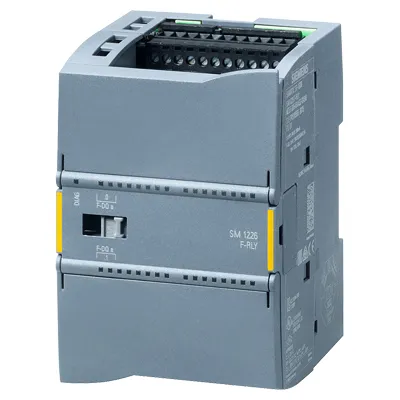
Frequently Asked Questions (FAQ) about VFDs and their Manufacturers
Here are answers to some common professional questions regarding VFDs and their manufacturing:
-
What are the key material components of a VFD, and why are they chosen?
Key materials include high-purity copper for windings and busbars due to its excellent electrical conductivity, ensuring minimal power loss. Aluminum alloys are extensively used for heatsinks due to their high thermal conductivity and lightweight properties, essential for dissipating heat from power semiconductors like IGBTs. Silicon is the foundation for power semiconductors (IGBTs, diodes) and microcontrollers, chosen for its semiconductor properties and ability to handle high voltages and currents. High-grade plastics (e.g., ABS, polycarbonate) are used for enclosures and control panels for insulation, impact resistance, and sometimes flame retardancy. Finally, specialized ceramic materials or mica sheets are employed for electrical insulation, especially in high-voltage sections, due to their superior dielectric strength and thermal stability.
-
What are the standard installation requirements for VFDs?
Standard installation requirements for VFDs typically include adequate ventilation and ambient temperature control (usually 0-40°C or up to 50°C with derating) to prevent overheating, as heat is the primary enemy of electronics. Proper grounding is critical for safety and EMC (Electromagnetic Compatibility) performance, adhering to standards like IEC 61800-5-1. The use of shielded motor cables (e.g., VFD-rated cables) is highly recommended to minimize EMI and common mode currents. Clearances for cooling air circulation must be maintained around the drive, and the VFD should be mounted vertically in a clean, dry environment, away from excessive dust, moisture, or corrosive gases, consistent with its IP rating.
-
How do VFDs contribute to extending motor and mechanical system lifespan?
VFDs extend motor and mechanical system lifespan primarily through "soft starting" and "soft stopping." Traditional Direct-On-Line (DOL) starting subjects motors to high inrush currents (6-8 times rated current) and mechanical shock, leading to significant wear on windings, bearings, gearboxes, belts, and couplings. VFDs eliminate this by ramping up the motor's voltage and frequency gradually, ensuring smooth acceleration. This reduces thermal and mechanical stress, mitigating fatigue and premature failure. Additionally, by allowing motors to operate at optimal, demand-driven speeds, VFDs reduce unnecessary operation at full speed, further minimizing wear and energy consumption.
-
What is harmonic distortion, and how do VFD manufacturers mitigate it?
Harmonic distortion refers to the presence of non-fundamental (multiple of the fundamental frequency) currents and voltages in an AC power system. VFDs, being non-linear loads due to their rectifier section, draw non-sinusoidal currents, generating harmonics. These harmonics can cause overheating in transformers and motors, interference with sensitive electronics, and power factor degradation. VFD manufacturers mitigate harmonics through several methods: using multi-pulse rectifiers (e.g., 12-pulse, 18-pulse), integrating passive harmonic filters (inductors, capacitors), or employing active front-end (AFE) technology (also known as active filters or regenerative drives). AFEs actively shape the input current waveform to be nearly sinusoidal, typically achieving less than 5% Total Harmonic Distortion (THD), and can also feed regenerated energy back to the grid.
-
What safety features are standard in modern VFDs, and why are they important?
Modern VFDs typically include integrated safety functions to comply with machine safety directives (e.g., ISO 13849, IEC 62061) and standards like IEC 61800-5-2. The most common is Safe Torque Off (STO), which reliably removes power from the motor, preventing unexpected startup. Other advanced safety functions include Safe Stop 1 (SS1), Safe Limited Speed (SLS), Safe Direction (SDI), and Safe Operating Stop (SOS). These features simplify machine safety design, reduce the need for external safety relays, enhance personnel protection during maintenance, and minimize machine downtime by allowing controlled stops without complete power shutdown.
-
What is the typical delivery timeline and warranty period for VFDs?
Delivery timelines for VFDs vary widely based on the model, power rating, and customization level. Standard, general-purpose VFDs are often available off-the-shelf or with lead times of 2-4 weeks. Highly specialized or high-power VFDs may require 8-16 weeks or more for manufacturing and testing. Regarding warranty, most reputable vfd manufacturers offer a standard warranty of 1 to 3 years from the date of purchase or installation, covering defects in materials and workmanship. Extended warranty options or service agreements are often available for critical applications, providing peace of mind and long-term support. The warranty details should always be carefully reviewed as they specify coverage, conditions, and claim procedures.
-
What kind of after-sales support and training do reputable VFD suppliers offer?
Reputable variable frequency drive supplier companies understand that their commitment extends beyond the sale. They typically offer comprehensive after-sales support including 24/7 technical hotlines, online troubleshooting resources, and a network of certified service engineers for on-site support, maintenance, and repairs. They also provide various training programs, ranging from basic VFD operation and programming for end-users to advanced diagnostics and commissioning for engineers and technicians. This training can be delivered through online modules, webinars, classroom sessions, or customized on-site courses, ensuring customers can maximize the efficiency and longevity of their VFD systems and resolve issues promptly.
Conclusion: The Future-Proofing Power of VFDs and Strategic Partnerships
Variable Frequency Drives are far more than just motor speed controllers; they are indispensable tools for achieving unparalleled energy efficiency, precise process control, and enhanced operational reliability across virtually every industrial sector. The continuous innovation by leading vfd manufacturers in areas like IIoT integration, advanced control algorithms, and sophisticated harmonic mitigation ensures that VFD technology remains at the forefront of industrial automation. By carefully considering technical parameters, understanding the rigorous manufacturing processes, and strategically evaluating variable frequency drives manufacturers based on their expertise, product quality, service network, and commitment to sustainability, industries can forge partnerships that drive long-term success and achieve significant competitive advantages.
The journey towards optimized industrial operations is paved with intelligent technology and trusted suppliers. As the industrial landscape continues to demand greater efficiency, flexibility, and sustainability, the role of VFDs and the companies that produce them will only become more critical, driving a future where power is managed with precision, and processes run with unparalleled performance.
For further insights into industrial automation and energy management:
- "The Future of Variable Speed Drives: Smart, Connected and Sustainable." Drives & Controls Magazine, April 2023. https://www.drivesncontrols.com/features/features_article/200637/the-future-of-variable-speed-drives-smart-connected-and-sustainable.html
- "IEEE Guide for Harmonic Control and Reactive Compensation of Static Power Converters." IEEE Standard 519-2022. This standard is crucial for understanding power quality and VFD integration. While a direct public link to the full standard isn't available, information can be found via the IEEE Xplore Digital Library. https://ieeexplore.ieee.org/document/9985223 (Note: Access usually requires subscription or purchase).
- "Energy Savings with Variable Speed Drives." US Department of Energy Fact Sheet. https://www.energy.gov/sites/prod/files/2015/01/f19/EE%20Motor%20Systems%20Fact%20Sheet.pdf

